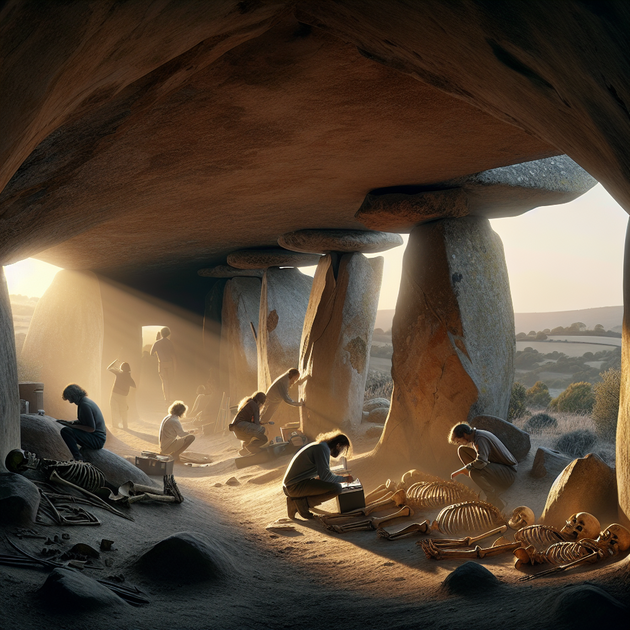5,000-Year-Old Stone Tomb Discovered in Spain Reveals Secrets of Prehistoric Burials
What would it feel like to stumble upon a chamber where people were laid to rest over five millennia ago? That’s exactly what archaeologists just experienced in Spain with the discovery of a colossal stone tomb dating back 5,000 years. This ancient megalithic grave stretches an impressive 43 feet (13 meters) and houses the remains of multiple individuals—unlocking stories from a forgotten era.
The Monumental Stone Tomb: A Glimpse into Ancient Spanish Life
The primary keyword here—stone tomb Spain—isn’t just another archaeological find. This structure stands as one of the largest prehistoric burial chambers unearthed on the Iberian Peninsula. Built around the Neolithic period (roughly between 3000 and 2500 BCE), its sheer size suggests it had major significance for the people who built it.
The tomb is made up of huge upright stones forming long corridors—a classic hallmark of megalithic architecture. Inside these cool stone walls are remains of men, women, and possibly children buried together across generations.
But why go to such lengths? Researchers believe these monumental constructions not only served as graves but also as community gathering spots for rituals and remembrance—a kind of spiritual anchor for early societies.
Prehistoric Burials: What Lies Beneath?
Let’s zoom in on what makes these prehistoric burials so fascinating:
- Multiple Generations: The tomb held remains from different ages stacked together—suggesting family or tribal connections.
- Grave Goods: Archaeologists frequently find pottery shards and personal ornaments buried with the dead.
- Positioning: Bodies were often laid facing specific directions or grouped purposefully—hinting at ritualistic beliefs.
- Megalithic Construction: Transporting and arranging such massive stones would’ve required communal effort and planning.
These details help us understand how important burial rituals were to early humans—and how much they valued honoring their dead.
The Science Behind Ancient Tomb Discoveries
So how do scientists unlock secrets from a stone tomb in Spain that’s been sealed for thousands of years? It’s part detective work, part high-tech investigation:
- Dating Techniques: Carbon dating bones or nearby charcoal reveals when people used the site.
- DNA Analysis: Genetic studies can determine family relationships between those buried together.
- Artifact Examination: Tools and jewelry provide clues about daily life and social status.
- Pollen & Soil Analysis: Even traces left in soil offer hints about climate and landscape back then.
Each new discovery adds another piece to the puzzle of how our ancestors lived—and died.
Anecdote: The Magic of Visiting a Megalithic Site
A few years ago during a trip through rural Portugal—not far from the Spanish border—I stumbled across an ancient dolmen tucked away behind olive groves. There was no ticket booth or guide; just mossy stones arranged into a silent chamber beneath sun-dappled trees. Standing there sent shivers down my spine. I could almost picture villagers gathering thousands of years ago to honor their loved ones—as if time folded right around me. That sense of awe is something archaeologists must feel every time they step into a newly discovered tomb like this one in Spain.
The Ongoing Mystery: What More Will We Learn?
Every time we find another ancient stone tomb in Spain or elsewhere in Europe, we get closer to understanding how people lived before cities or written records existed. Yet so many questions remain open:
- Who exactly was buried here—and why?
- What beliefs drove people to build such grand monuments?
- How did these communities organize labor on such a huge scale?
As new digs continue at this Spanish site and others like it, we’re bound to uncover even more incredible stories about our shared human past.
So next time you pass by some mossy stones on your travels—or read about another big archaeological breakthrough—just imagine what secrets might still be waiting underground. If you could step inside one of these prehistoric burial chambers yourself, what would you hope to find?

Leave a Reply